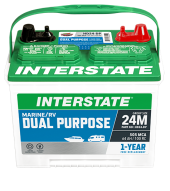Bluedog225
Texas
- Joined
- Nov 18, 2019
- Messages
- 2,999
I’m glad you are getting good feedback. I would suggest that there is a lot wrong with your approach. My advice would be to stop buying stuff. Learn what a watt is and how it relates to volts and amps. Lots of resources out there.
You can analyze a lot of this subject if you understand watts.
And your battery is like a cup of water. You fill it with electricity, then use it, then fill it again. And add water carefully and in accordance with the manufacturers instructions. Based on water level. And remember it’s full of acid. Never discharge past 50 percent. Never let the lead plates see air.
Given what you have said, you are probably going to kill that first battery early. Many people do this with lead acid through over discharge and improper maintenance.
A pause, learn about the cheapish LiFePO4 batteries, learn why 48 volt is probably better for you, and learn why you should not mix panels with different specs without being careful.
Hot plates and dryers are the last things I would run with a solar system and battery. Too many watts. But there a re a couple of dozen other things that solar works great for (led lights, phones, computers, small fans, cordless tools, etc.
All the best.
You can analyze a lot of this subject if you understand watts.
And your battery is like a cup of water. You fill it with electricity, then use it, then fill it again. And add water carefully and in accordance with the manufacturers instructions. Based on water level. And remember it’s full of acid. Never discharge past 50 percent. Never let the lead plates see air.
Given what you have said, you are probably going to kill that first battery early. Many people do this with lead acid through over discharge and improper maintenance.
A pause, learn about the cheapish LiFePO4 batteries, learn why 48 volt is probably better for you, and learn why you should not mix panels with different specs without being careful.
Hot plates and dryers are the last things I would run with a solar system and battery. Too many watts. But there a re a couple of dozen other things that solar works great for (led lights, phones, computers, small fans, cordless tools, etc.
All the best.





